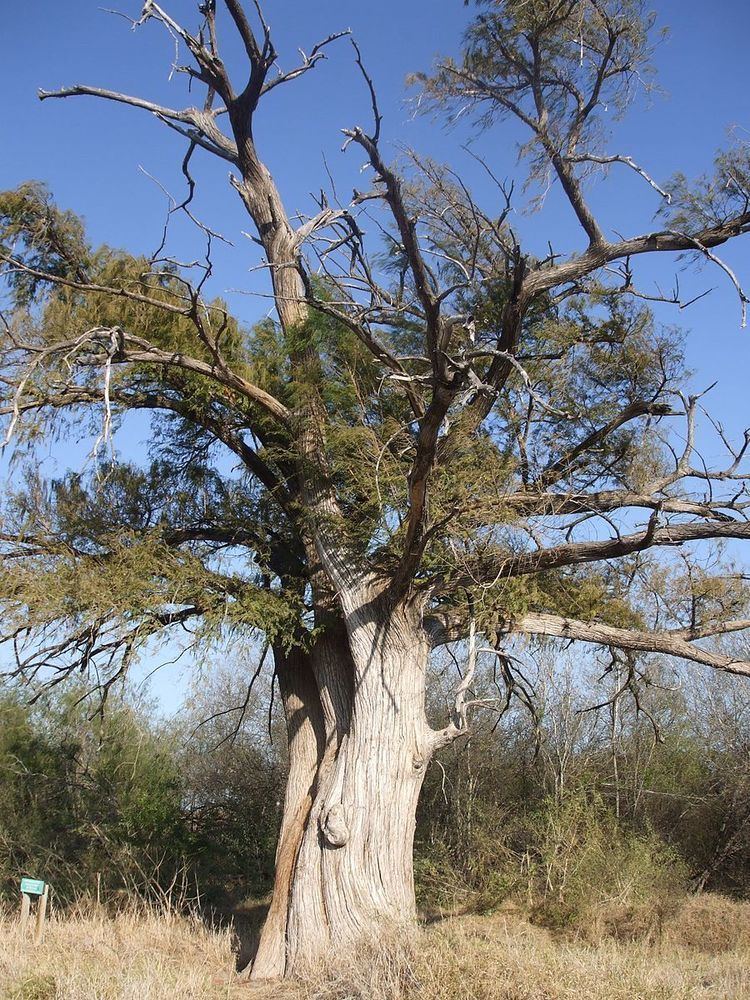A megadrought (or mega-drought) is a prolonged drought lasting two decades or longer. Past megadroughts have been associated with persistent multiyear La Niña conditions (cooler than normal water temperatures in the tropical eastern Pacific Ocean).
The term megadrought is generally used to describe the length of a drought, and not its acute intensity. In scientific literature the term is used to describe decades-long droughts or multi-decadal droughts. Multiyear droughts of less than a decade, such as the Dust Bowl drought of the 1930s, are generally not described as megadroughts even though they are of a long duration. In popular literature multiyear or even single year droughts are occasionally described as megadroughts based upon their severity, the economic damage they inflict or other criteria, but this is the exception and not the rule.
Megadroughts have historically led to the mass migration of humans away from drought affected lands, resulting in a significant population decline from pre-drought levels. They are suspected of playing a primary role in the collapse of several pre-industrial civilizations, including the Anasazi of the North American Southwest, the Khmer Empire of Cambodia, the Mayan of Mesoamerica, the Tiwanaku of Bolivia, and the Yuan Dynasty of China.
The African Sahel region in particular has suffered multiple megadroughts throughout history, with the most recent lasting from approximately 1400 AD to 1750 AD. North America experienced at least four megadroughts during the Medieval Warm Period.
There are several sources for establishing the past occurrence and frequency of megadroughts, including:
When megadroughts occur, lakes dry up and trees and other plants grow in the dry lake beds. When the drought ends the lakes refill, when this happens the trees are submerged and die. In some locations these trees have remained preserved and can be studied giving accurate radio-carbon dates, and the tree rings of the same long dead trees can be studied. Such trees have been found in Mono and Tenaya lakes in California, Lake Bosumtwi in Ghana; and various other lakes.Dendrochronology, the dating and study of annual rings in trees. The tree-ring data indicate that the Western states have experienced droughts that lasted ten times longer than anything the modern U.S. has seen. Based on annual tree rings, NOAA has recorded patterns of drought covering most of the U.S. for every year since 1700. Certain species of trees have given evidence over a longer period, in particular Montezuma Cypress and Bristlecone pine trees. The University of Arkansas has produced a 1238-year tree-ring based chronology of weather condition in central Mexico by examining core samples taken from living Montezuma Cypress trees.Sediment core samples taken at the volcanic caldera in Valles Caldera, New Mexico and other locations. The cores from Valles Caldera go back 550,000 years and show evidence of megadroughts that lasted as long as 1000 years during the mid-Pleistocene Epoch during which summer rains were almost non-existent. Plant and pollen remains found in core samples from the bottom of lakes have been also studied and added to the record.Fossil corals on Palmyra Atoll. Using the relationship between tropical Pacific sea surface temperatures and the oxygen isotope ratio in living corals to convert fossil coral records into sea surface temperatures. This has been used to establish the occurrence and frequency of La Niña conditions.During a 200-year mega drought in the Sierra Nevada that lasted from the 9th and 12th centuries, trees would grow on newly exposed shoreline at Fallen Leaf Lake, then as the lake grew once again, the trees were preserved under cold water.
